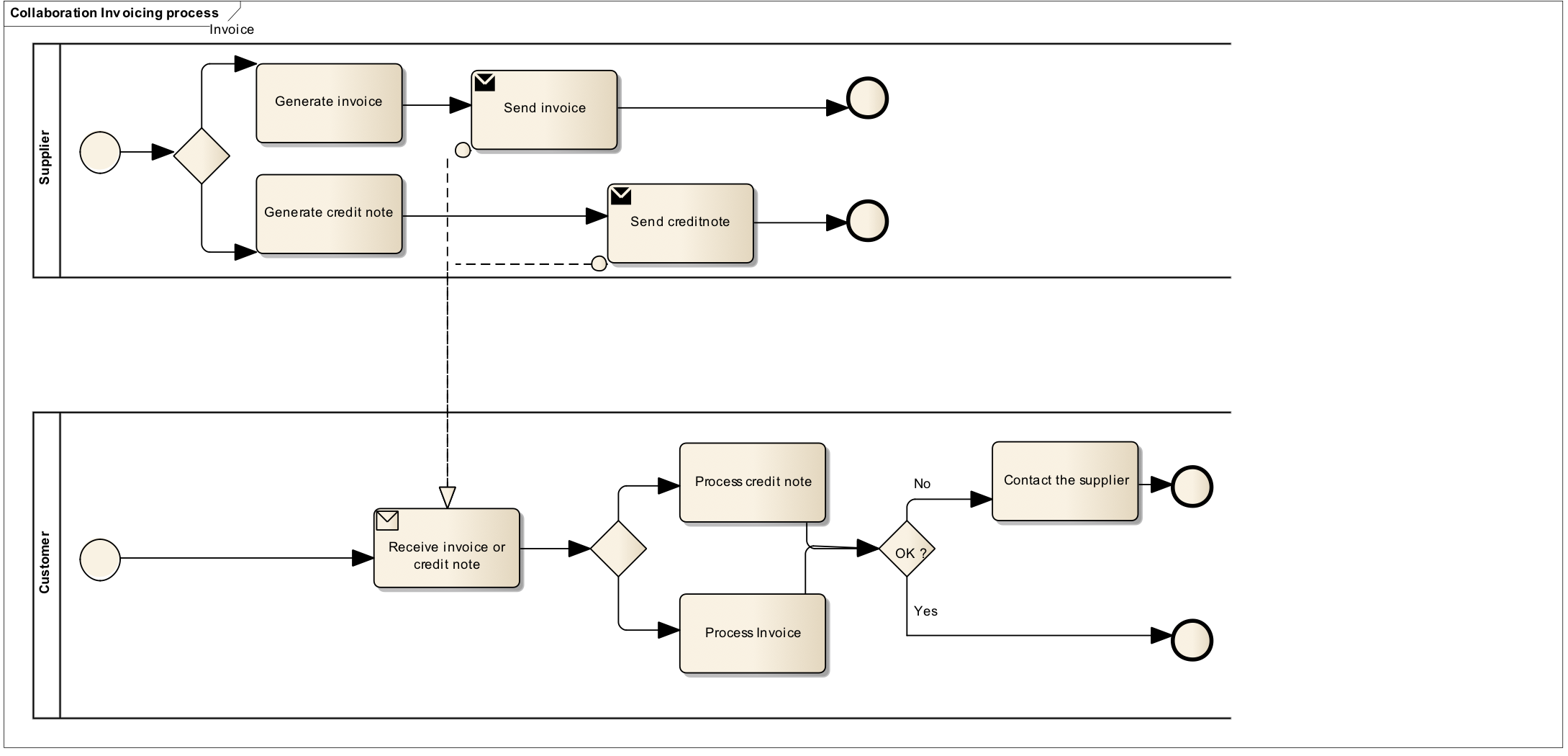Link to main site of documentation
Introduction to openPEPPOL and BIS
This specification, is a Country Specification of the Peppol International model (PINT). Any instance documents compliant to this specification will be compliant with the PINT.
The purpose of this document is to facilitate an efficient implementation and increased use of electronic collaboration regarding the billing process.
Scope
This document will also provide a detailed implementation guideline for a Debit Note as a standalone business process.
Audience
The audience for this document is organisations wishing to be Peppol enabled for exchanging electronic invoices, and/or their ICT-suppliers. These organisations may be:
-
Service providers
-
Contracting Authorities (CA)
-
Economic Operators (EO)
-
Software Developers
More specifically, roles addressed are the following:
-
ICT Architects
-
ICT Developers
-
Business Experts
For further information on Peppol/OpenPEPPOL, please see PEPPOL BIS common text and introduction
1. Benefits
The Debit Note process enables a seller to notify a buyer of a delivery of items including information of the amounts which will be invoiced:
-
The item information and quantities in a debit note can be used to prepare and contol the reception of items.
-
The monetary amounts in the debit note can be verified and comments raised before an invoice is issued.
-
The monetary amounts in the debit note can be used to book uninvoiced liabilites when items are received but invoice has not been issued.
-
A debit note can be referenced from an invoice to support the approval of the invoice.
2. Parties and roles
The diagram below shows the parties and roles involved in the exchange of debit notes.

2.1. Parties
- Supplier
-
The supplier is the legal person or organisation who provides a product or service. In the context of debit note the supplier is in the role of the sender of the delivered items.
- Customer
-
The customer is the legal person or organisation who is in demand of a product or service. In the context of debit note the customer is in the role of the receiver of the delivery of items.
3. Business processes
3.1. Debit Note process
In the debit note process, the supplier sends a debit note to the buyer with each delivery and the buyer uses the information in the debit note to verify the reception of the items. The debit note is focused on providing information about the items that are being delivered.
The invoicing process is shown in this work flow:
-
A supplier can send one or more debit note along with the deliveries of items. The debit note refers to the order and provides information about the items and their quantities. The customer can use the debit note to control the receiption of the items.
The diagram below shows the debit note process. This process assumes the debit notes are exchanged electronically.

3.2. Documents used in process.
The Debit Note process requires the use of the following document:
- Debit Note
-
The debit note uses the same data model as the Japanese standard invoice with the difference that document type code is 383, terminology is adjusted from invoice to debit note and rules are reduced.
4. Peppol Identifiers
Peppol has defined a PEPPOL Policy for identifiers, policy 8 that specifies how to use identifiers in both its transport infrastructure and within the documents exchanged across that infrastructure. It also introduces principles for any identifiers used in the Peppol environment. The policies that apply to this BIS are the following:
4.1. Profiles and messages
All messages contains Business process type (IBT-23) and Specification identifier (IBT-24). Business process type (IBT-23) identifies what business process a given message is part of, and Specification identifier (IBT-24) identifies the kind of message and the rules applied.
Profiles are connected to one business process, and may contain multiple document types. Valid document instances shall contain corresponding Business process type (IBT-23) and Specification identifier (IBT-24).
| Specification identifier (IBT-24) is a string without spaces. The list below contains spaces in Specification identifier (IBT-24) to make them easier to read. Make sure to remove any spaces before use. |
4.2. Summarised invoice messages
In the table below you will find the values to be used as the specification identifier (IBT-24) and the business process type (IBT-23) for this profile
| Type | Element cbc:CustomizationID |
Element cbc:ProfileID |
|---|---|---|
Debit Note |
urn:peppol:pint:debitnote-3.0@jp:peppol-1 |
urn:peppol:bis:debitnote |
<cbc:CustomizationID>urn:peppol:pint:billing-3.0@jp:peppol-1</cbc:CustomizationID>
<cbc:ProfileID>urn:peppol:bis:billing</cbc:ProfileID>5. UBL schemas and namespaces
The XML schemas used are
-
UBL Invoice 2.1 with the target namespace
urn:oasis:names:specification:ubl:schema:xsd:Invoice-2 -
UBL CreditNote 2.1 with the target namespace
urn:oasis:names:specification:ubl:schema:xsd:CreditNote-2
